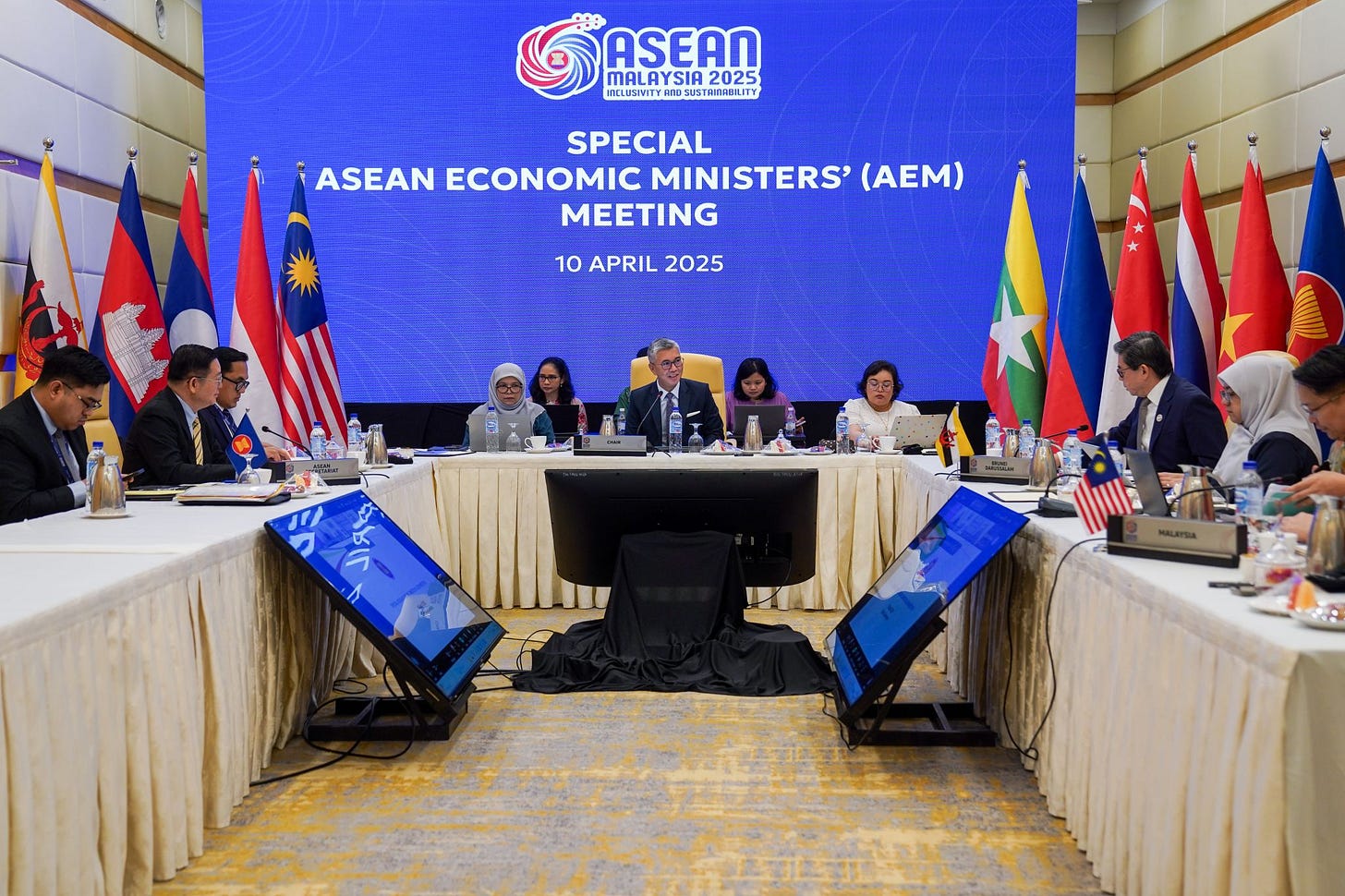Review: Trump II and Shifting Southeast Asia US Perceptions
New book forecasts future trajectory of US position in Southeast Asia amid China competition and shifting domestic realities across key regional capitals.
A new book forecasts the future trajectory of the U.S. position in Southeast Asia amid China competition and shifting domestic realities across regional capitals.
WonkCount: 1,618 words (~8 minutes)
Review: Trump II and Shifting Southeast Asia US Perceptions
Context
“ASEAN faces the biggest threat to its economic security since its foundation,” Mari Pangestu, a globally-renowned Indonesian economist who sits on the country’s National Economic Council, wrote this week in a widely-circulated piece on the regional impacts of shifting U.S. tariffs from the administration of U.S. President Donald Trump1. The response was one of several advanced in Southeast Asian capitals privately and publicly amid a special virtual ASEAN economic ministers meeting where U.S. tariffs were discussed2. The spectrum has ranged from new bilateral U.S.-Vietnam talks to suggestions that tariff anxieties may be “a good thing” — in the words of one senior official — to build momentum for sluggish regional initiatives3. U.S. officials ASEAN Wonk has engaged with are not unaware of the risks to Washington’s wider regional position, even as some early U.S. gains have been seen with individual Southeast Asian states like the Philippines.
Select Key Recent Developments Related to U.S.-Southeast Asia Ties and Regional Dynamics
A new volume Southeast Asia Views the United States edited by scholar Ann Marie Murphy provides a window into diverse country perspectives on the United States amid uncertainties about Washington’s regional position4. In doing so, it adds to the list of publications that focus on the trajectory of U.S. ties with Southeast Asia amid decades of ebbs, flows and imbalances in Washington’s commitment to the region, a few of which we have reviewed previously on ASEAN Wonk. These include ex-ambassador Scot Marciel’s Imperfect Partners and scholar Joseph Liow’s Ambivalent Engagement.5 Southeast Asia Views the United States has 10 chapters covering eight of the eleven Southeast Asian states, thereby showcasing the region’s diversity that can get lost in more superficial regionwide analyses. The result is a rich volume that surveys diverse approaches — from the shifting composition of so-called “veto players” in Indonesia’s domestic political landscape to a fragile “strategic convergence-domestic divergence” duality in U.S.-Vietnam relations6. “It is important to stress that there is no single “Southeast Asian” perception of the United States,” Murphy notes before condensing granular country-specific insights.
Analysis
Southeast Asia Views the United States also forecasts the outlook for U.S. ties with individual Southeast Asian states including datapoints important to watch in the coming years (see originally generated ASEAN Wonk table below for a summary of priority countries and variables, along with major pivot points to watch. Paying subscribers can also read the rest of the “Analysis” section and “Implications” section looking at how these dynamics play out in the future).





